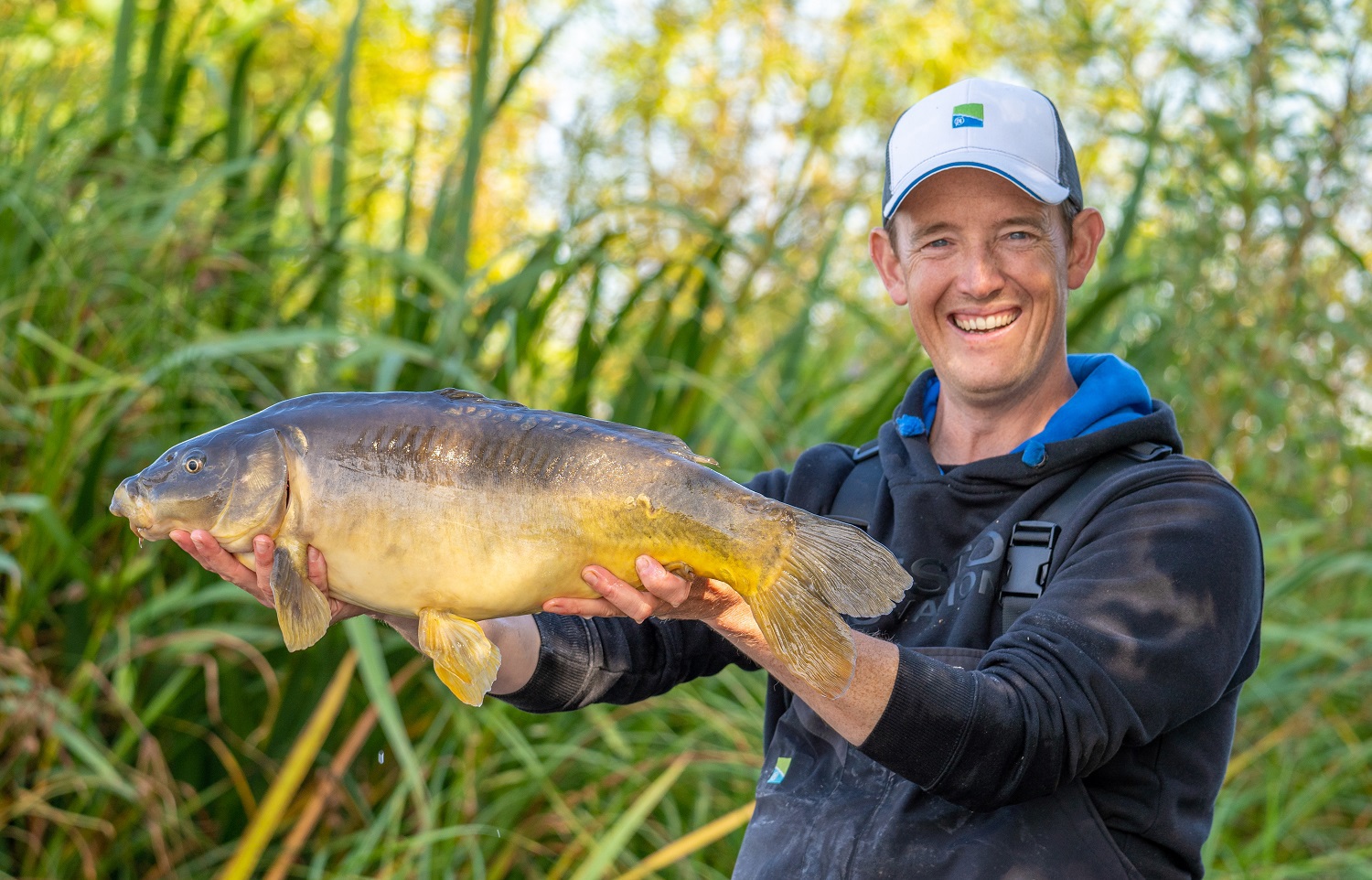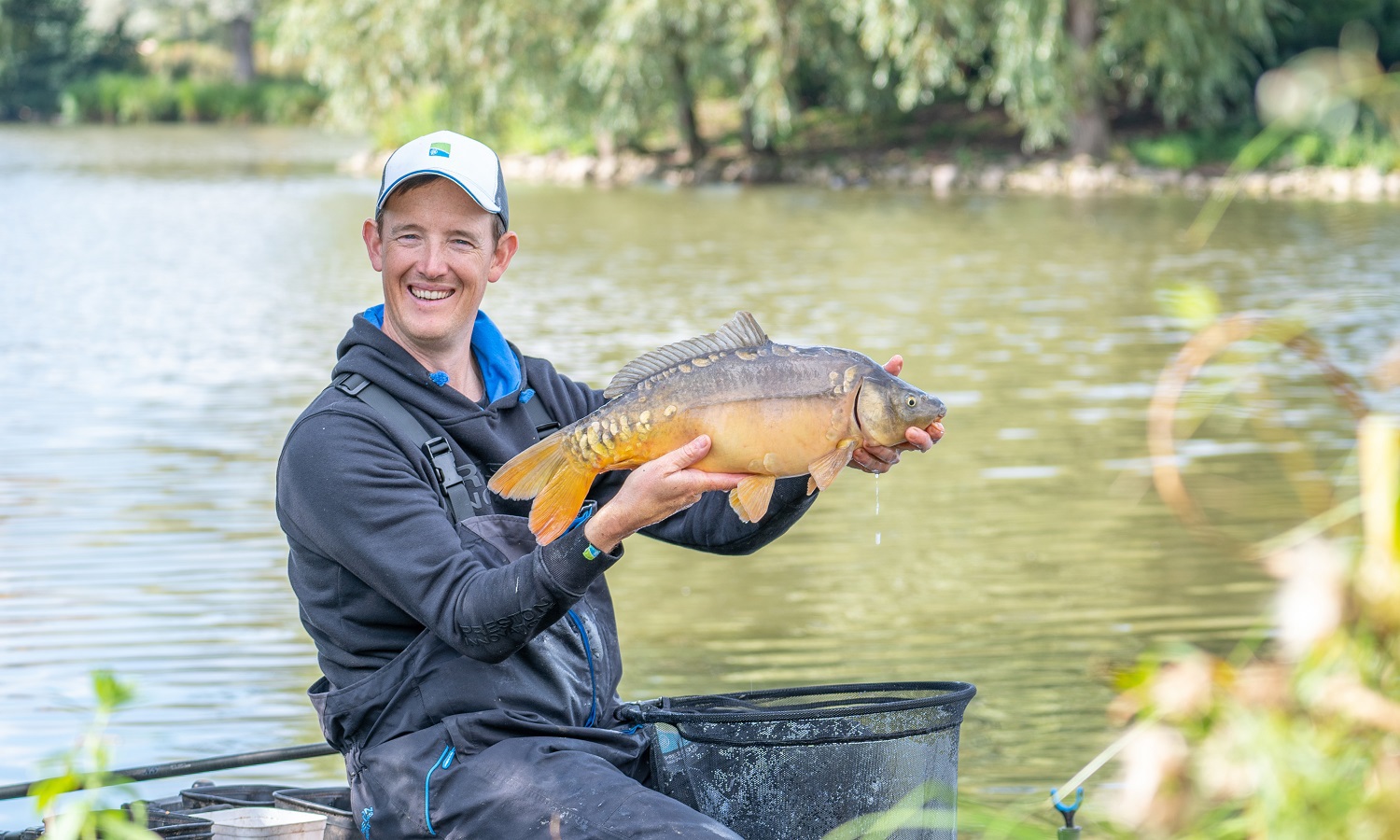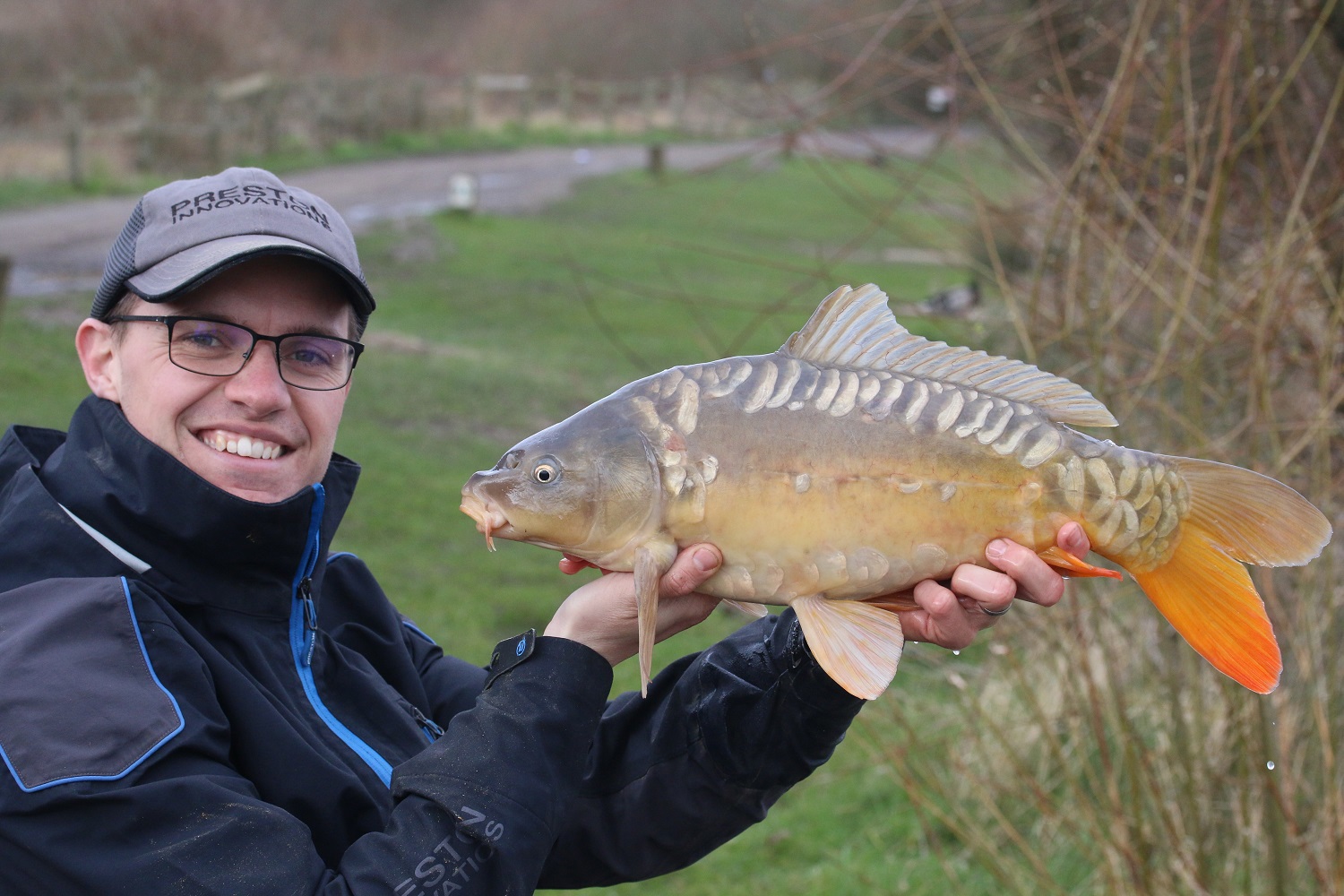One of the most popular tactics in the UK and throughout Europe is the Method feeder. Of course this is a deadly tactic on both commercial fisheries and natural waters, but there are certain nuances to it that can be easily overlooked.
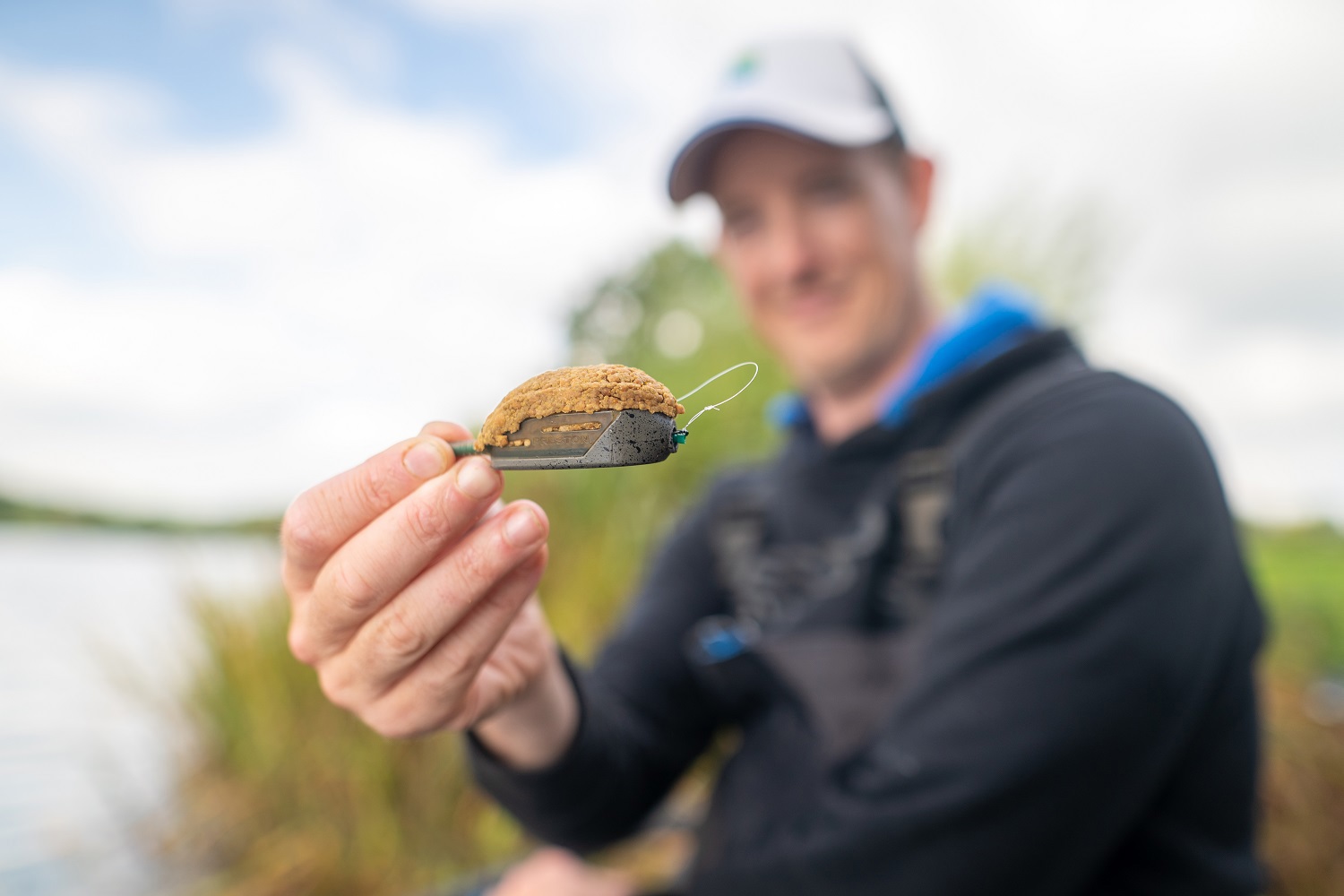
As the tactic has been developed, it has become a very technical approach that needs just as much respect and thought as some of the more traditional approaches. This is especially true in the colder months of the year. The winter months are superb for the Method feeder, but the tactics need to be a far-cry from the aggressive styles of the summer.
So, we have asked a few of the Preston Innovations anglers for their best tips to keep that rod tip whacking round, even in the cold!
When it comes to winter Method work, the bait that you choose is incredibly important. When you are only looking to have a few casts in five hours, then you are relying on your bait and its attractiveness to pull the fish to your feeder and ultimately your hook bait.
This is where we can learn an awful lot from the big carp anglers as I believe they work much harder with their bait than match anglers do. There are three key factors to consider with bait:
In the winter months, the water is either gin clear or incredibly coloured after flooding. This is why you must think about the visual attraction of your Method feeder bait carefully and think about how you can add the visual element of attraction to make sure that part of the formula is covered.
So, there are several things we can do to boost the visual appeal of your bait. Before we go any further let’s discuss the pellets themselves which in my case are usually 2mm Sonubaits Fin Perfect pellets. They are a fairly light brown colour once prepared, which although the fish know what they are, the colour isn’t ‘booming’ and shouting at the fish to investigate.
So, dying the pellets can work very well, particularly when the water is heavily coloured. I have had amazing success dying my pellets yellow in coloured water and it gives me huge confidence to do so. Of course, you can try different colours, red in particular has been a good choice for some well-known anglers.
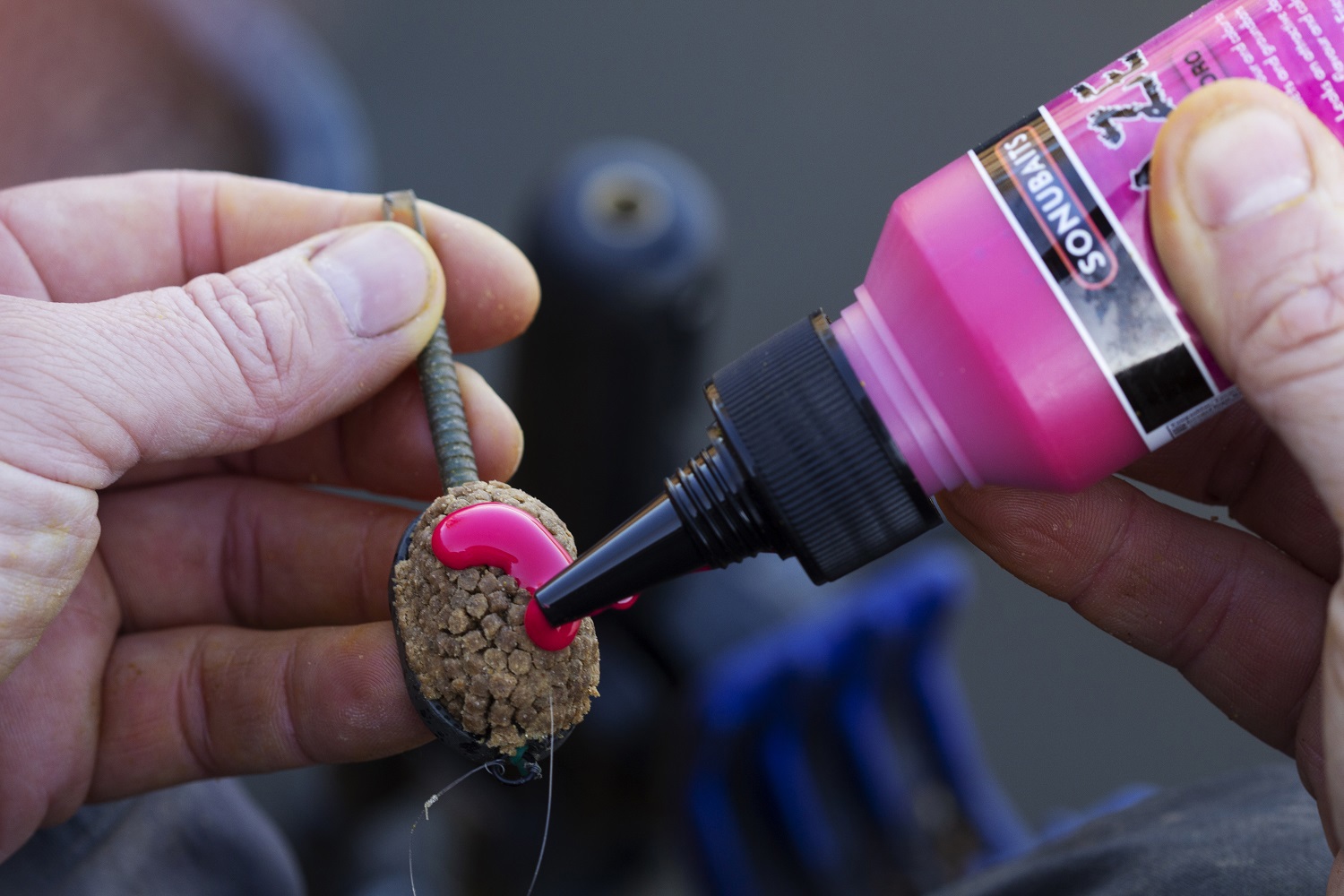
I dye the pellets using the Sonubaits Haze, the Banoffee flavour gives the pellets a lovely golden yellow colour and also a nice aroma! If you don’t wish to do this then the Stiki Method Pellets are a good choice as they already have the coloured pellets in the bag!
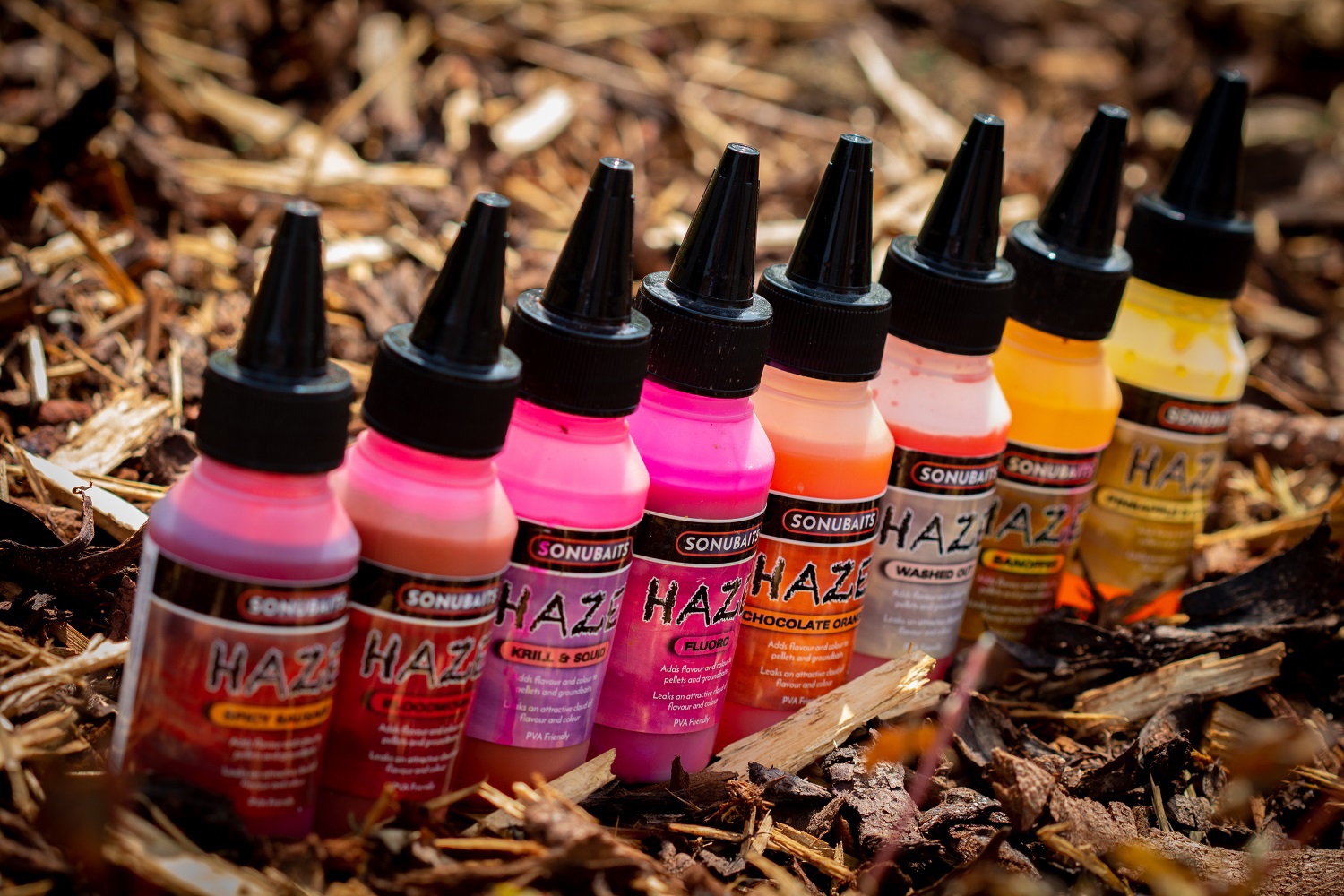
So dyed pellets work, we know that, and it is a great trick to try. But what else can we do to further enhance the visual appeal?
If the water is clear, then I prefer a more subtle approach. Rather than have the colour glowing on the spot, I prefer the bait to just have that nice little fleck of colour that will catch the carp’s eye as it cruises past.
To do this I add a nice little product to my pellets called Fluoro Rocks. These super bright particles are sprinkled into the softened pellets and they just give me a nice subtle colour that ticks my visual box.

The final little addition is to use something more dramatic and in your face. A smear of HAZE straight onto the feeder, fills the water column with super bright colour and can create an immediate response. It always amazes me that even when the fishing is difficult, this ‘in your face’ tactic can get you a bite!
The second and third key consideration when the fishing is tough is the smell and taste the bait emits. There is no doubt that additives and flavours work in the winter. The carp have diminished senses in the winter, and you need the bait to be really shouting ‘come get me’!
I have had some incredible experiments over the years when playing with flavours and I am confident that they have made a difference to my results many times and never more obvious that in winter.
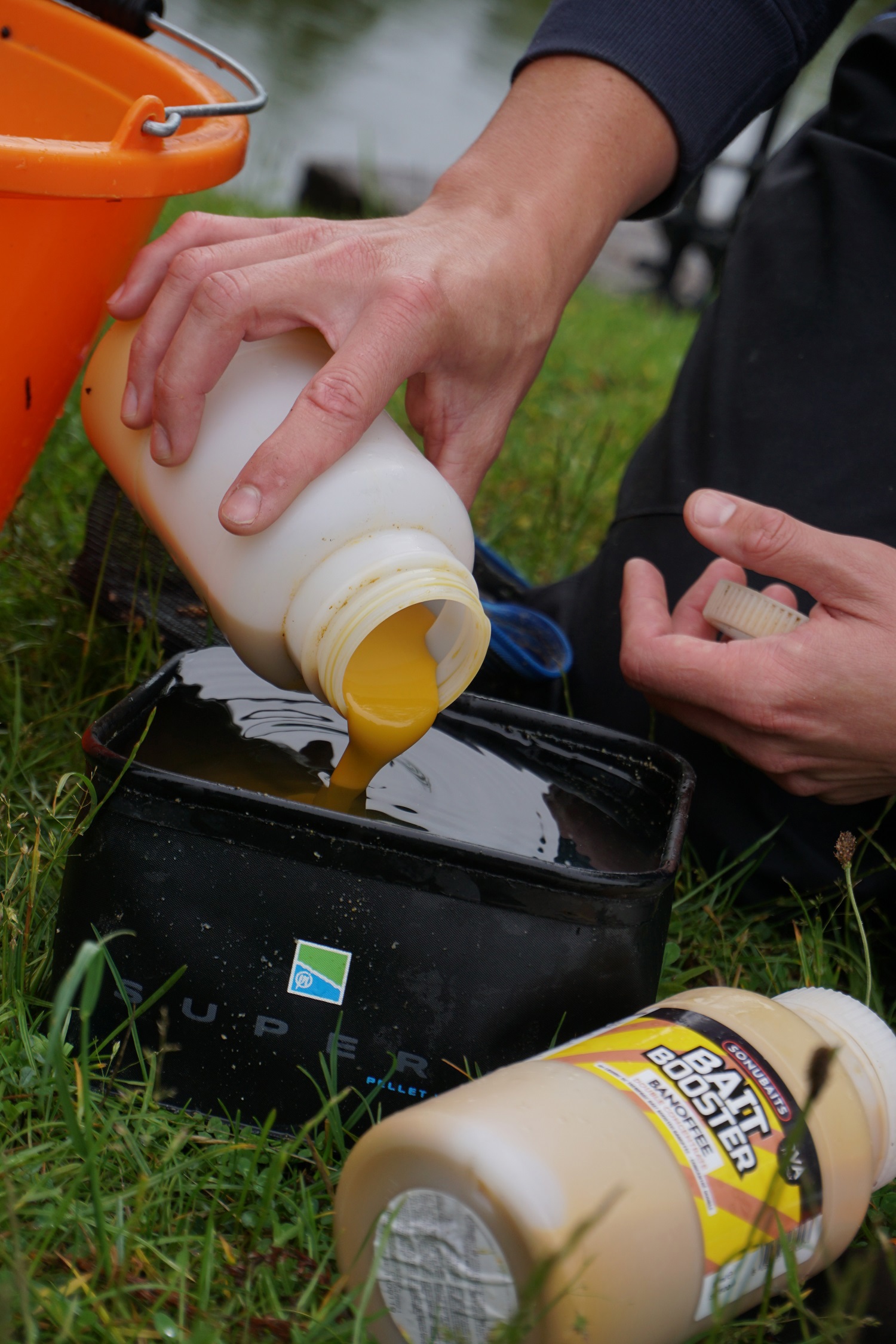
The pellets we use have a strong natural fishmeal aroma that the fish like, there is no doubt about that and lots of anglers keep them plain and use them with great success. But on the larger waters, and particularly the waters that see specimen carp anglers, there is no doubt to me that the fish react well to flavours and definitely show a preference to flavoured baits.
So what flavours are we looking at? I keep it quite simple and look for a sweet flavour when it’s cold and a bold fishmeal style flavour in the summer.
The sweet flavours I like to use are any of the Bait Boosters. You may be surprised by that but dip your finger and taste any of the flavours and you will be met with a beautiful, sweet taste. So even the Krill & Squid variant tastes sweet despite its bold fishy smell.
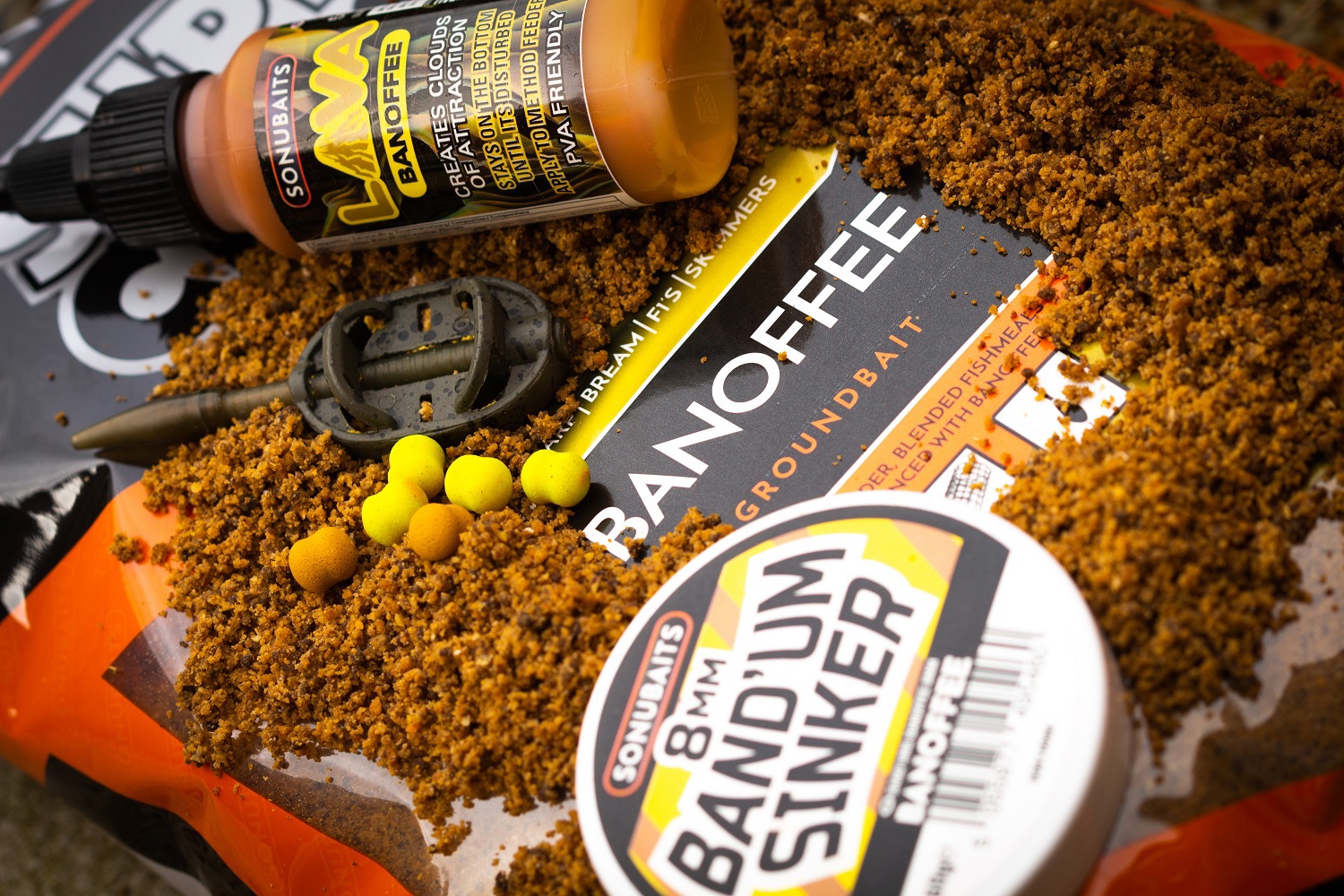
But to be clear, I stick tend to stick to either the Banofee or the Washed Out flavours as I really love their aroma. I prepare my pellets as normal and then drizzle the Bait Booster over the pellets. This not only gives me a sweet smell and taste that I am looking for but also gives my pellets extra ‘stick’ to help them mould nicely around the feeder.
The last idea and one that seems to be forgotten about in the modern era, is just how effective groundbait can be. A dusting of groundbait on your pellets really does boost their appeal. Again, I stick to the sweet/ fishy formula and go for F1 groundbait in the winter and Thatchers in the summer.
There is so much to discuss when considering your hook bait for Method fishing. I like to keep things simple and use a few tried and tested favourites that have worked well for me over the years.
In the wintertime there is no doubt in my mind that when targeting larger carp then Wafters are the number one choice. They have numerous advantages of course, but ultimately, they work!
I tend to stick to the 10mm Band ‘Um Wafters in the winter as I believe they are just about the right size. A decent bream will still take one and as we know, a 2lb bream is not to be sniffed at in the winter. But it is easy to carry too many options in your bag in terms of flavours and colours. Walk into any tackle shop these days and there will be a smorgasbord of wafter options and the temptation to try them all is there, even for me!
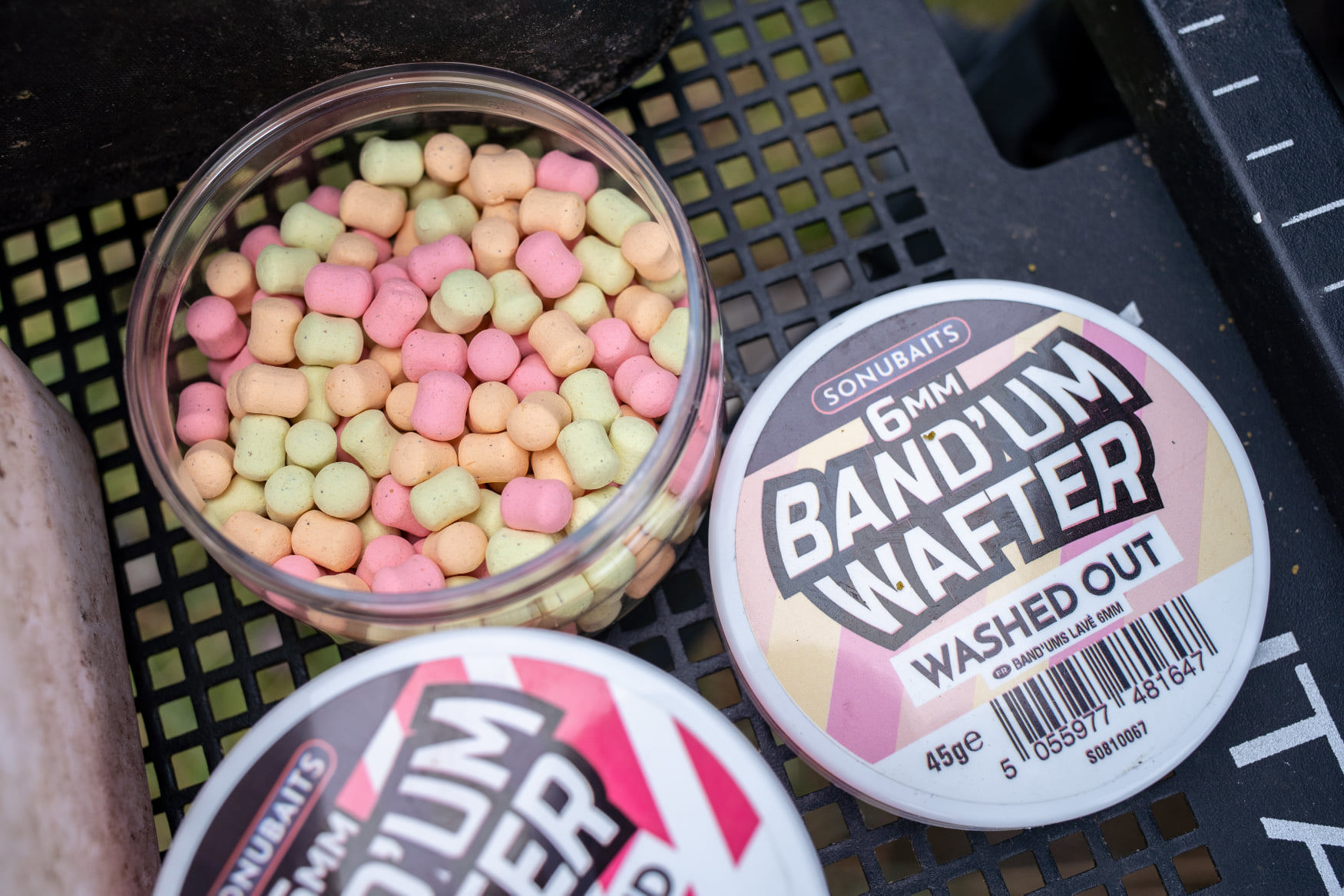
But I try and carry two versions that give me two distinct options. When the water is extremely coloured, I will use a Fluoro Band ‘UM Wafter in any of the three colours in the pot. These baits are so bright that they cannot fail to catch the eye of any passing carp.
If the water is clear, then a switch to the washed Out Wafters is made. These subtle hook baits are still colourful, but the more pastel appearance is a bit less scary to a carp. I believe a Fluoro in clear water would just be too blatant and may actually spook the fish as opposed to triggering a bite!
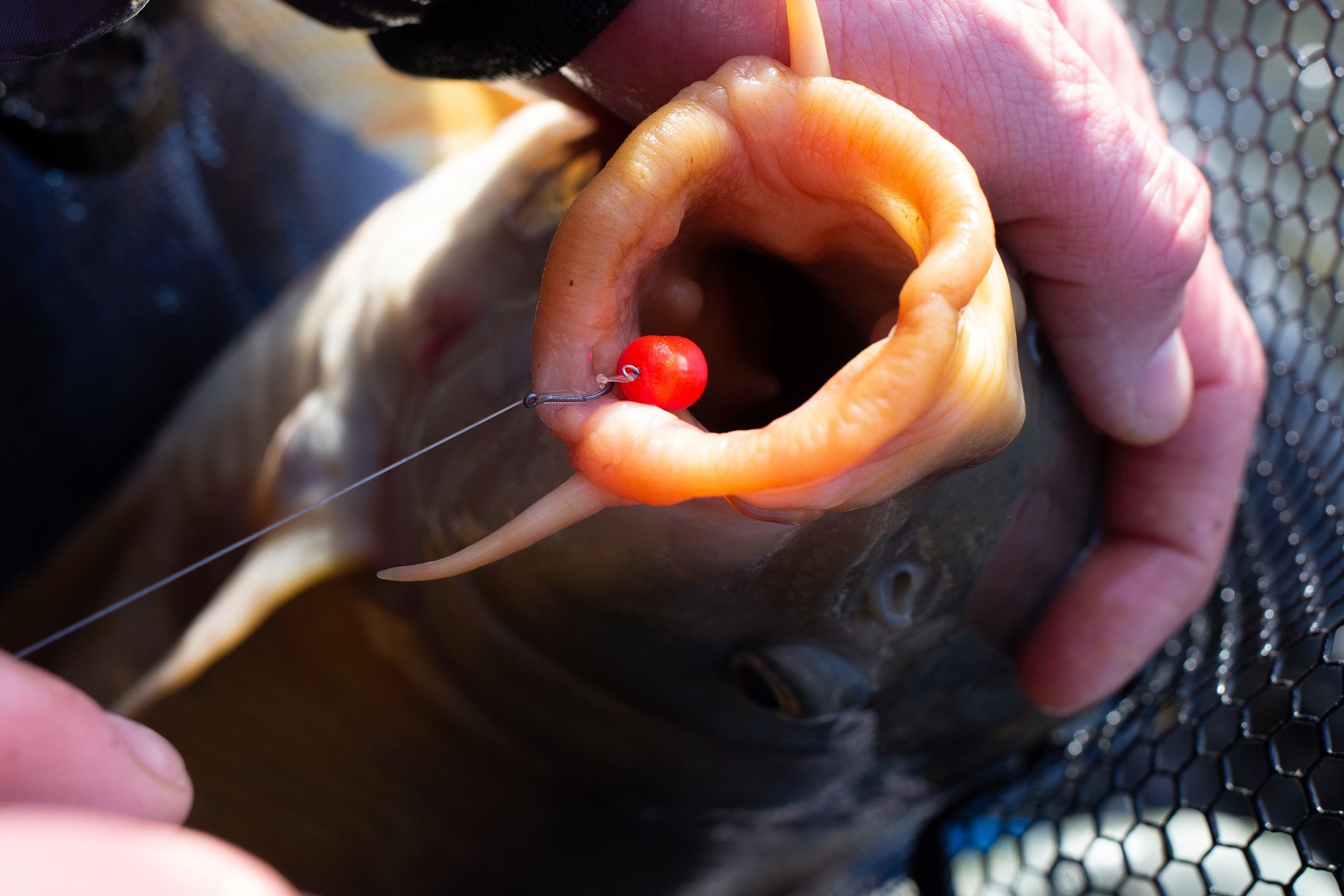
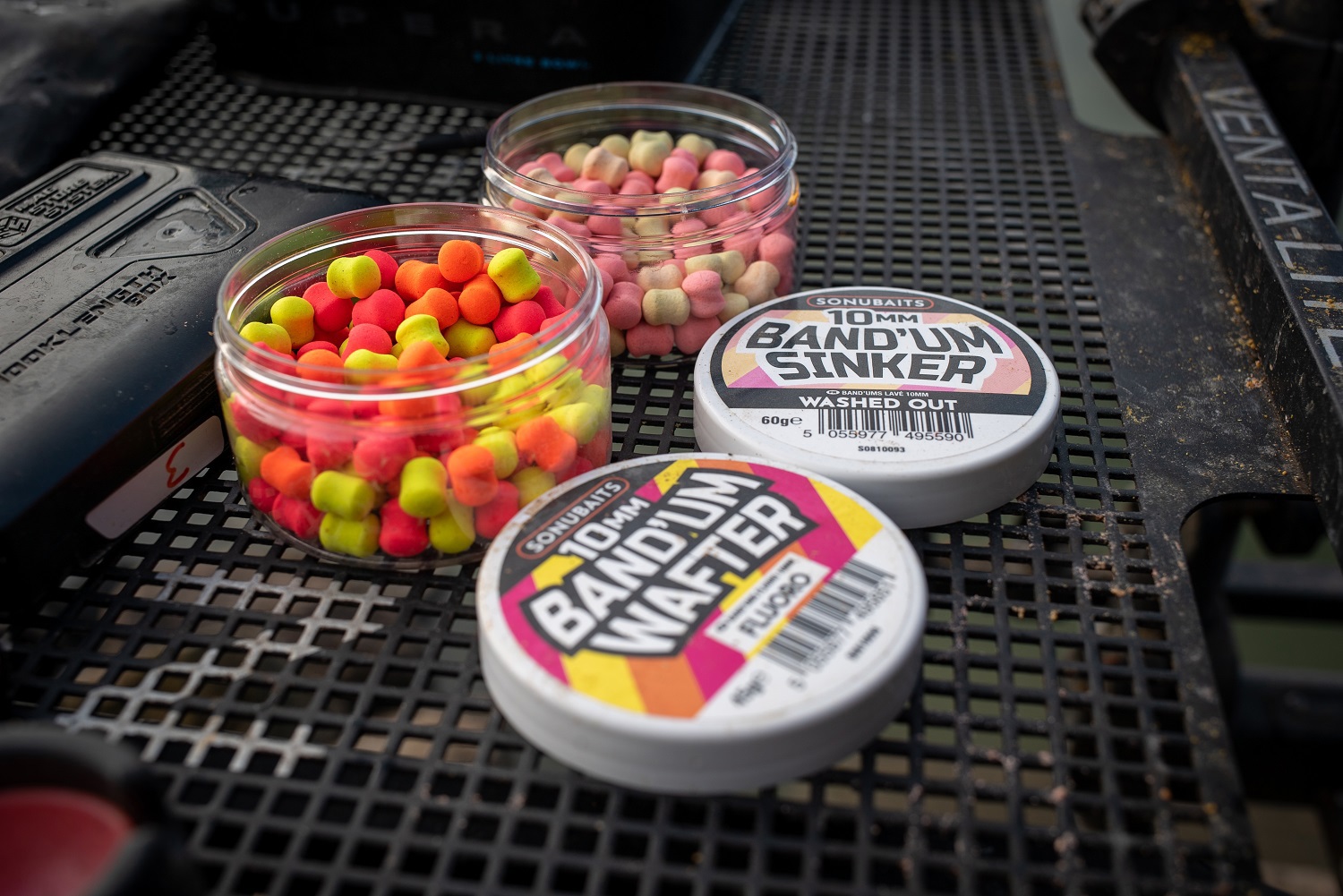
Wafters can be presented in numerous ways and our Band ‘Ums are designed so that you can place them in a bait band. But when waiting for a bite I much prefer the presentation and security a bayonet set up offers.
There are other hook baits to try. If the fishing is good, particularly when the fish are responding to groundbait, then dead maggots can be incredible. It is amazing how in this era of all manner of weird and wonderful hook baits, a single dead maggot can be so effective!
On venues where bream can be important weight builders with the occasional carp thrown in, then maggots are essential! They give you the best chance of catching everything.
The final essential hook bait is the simple banded hard pellet in either 6mm or 8mm. I have caught thousands of carp on hard pellets over the years and it is still a great choice. Perhaps not so much in the winter, but certainly when the weather improves.
I think something I need to touch on is matching hook size to hook bait. The trend nowadays is to use a size 10 or 12 MCM-B for everything. This has stemmed from using Wafters and while those big hooks do work well when combined with wafters, they aren’t right for smaller hook baits. So, I have a simple guide. If I am using a wafter then I will use a size 12 MCM-B and if I am using dead maggots or hard pellets, then I will switch so a size 16 KKH-B. This keeps my choices simple, but I think the hook sizes match the hook baits perfectly.
The final part of this jigsaw comes to the actual fishing and reading your swim. The Method feeder in the winter is a very mobile approach. This is a far cry from the summer when repeated casting, in some cases every minute, to the same spot is essential. In winter I will rarely cast the feeder into the same spot twice, providing I have the water to explore of course.

Much of my winter Method fishing is done on large open water style venues with no features to work with and on these open venues, working the water in a strategic manner is essential.
Because I want to cast into new water on each cast (within reason) I will start short and work my way out, hopefully nicking fish along the way. If the water offers me the chance to cast long (up to 100metres) then my first cast of the day will be somewhere between 50m and 60m. There is little point casting closer than this as on these large waters 95% of the time the carp will be pushed away from the bank.

I will sit on that first cast for 30minutes to really gauge what is happening. I keep a keen eye on anglers around me and watch what distance they are fishing, and they will tell me a lot about where the fish are sat, distance wise, but also what sort of bite time we are looking at.
The second cast of the day will then be five metres further to creep out a little further into the lake. This is then where a decision must be made. If neither of the two casts result in a carp, then I have to assume that the fish are a little further out. This is when the third cast will see me make a significant 10metre jump to 75metres.
If I catch a fish at 65metres though, I will then creep out two metres as it is clear there are some fish at that type of distance.
Hopefully that mindset makes sense. I always want to creep out into new water, but I must read the water and think about what is happening rather than just casting further and further with reckless abandon! If it is clear the fish are roughly at the distance, I am fishing then I will move two metres further at a time. However, if the fish aren’t there, then the increase in distance will be more dramatic until I find them. The last cast of the day will always be my longest.
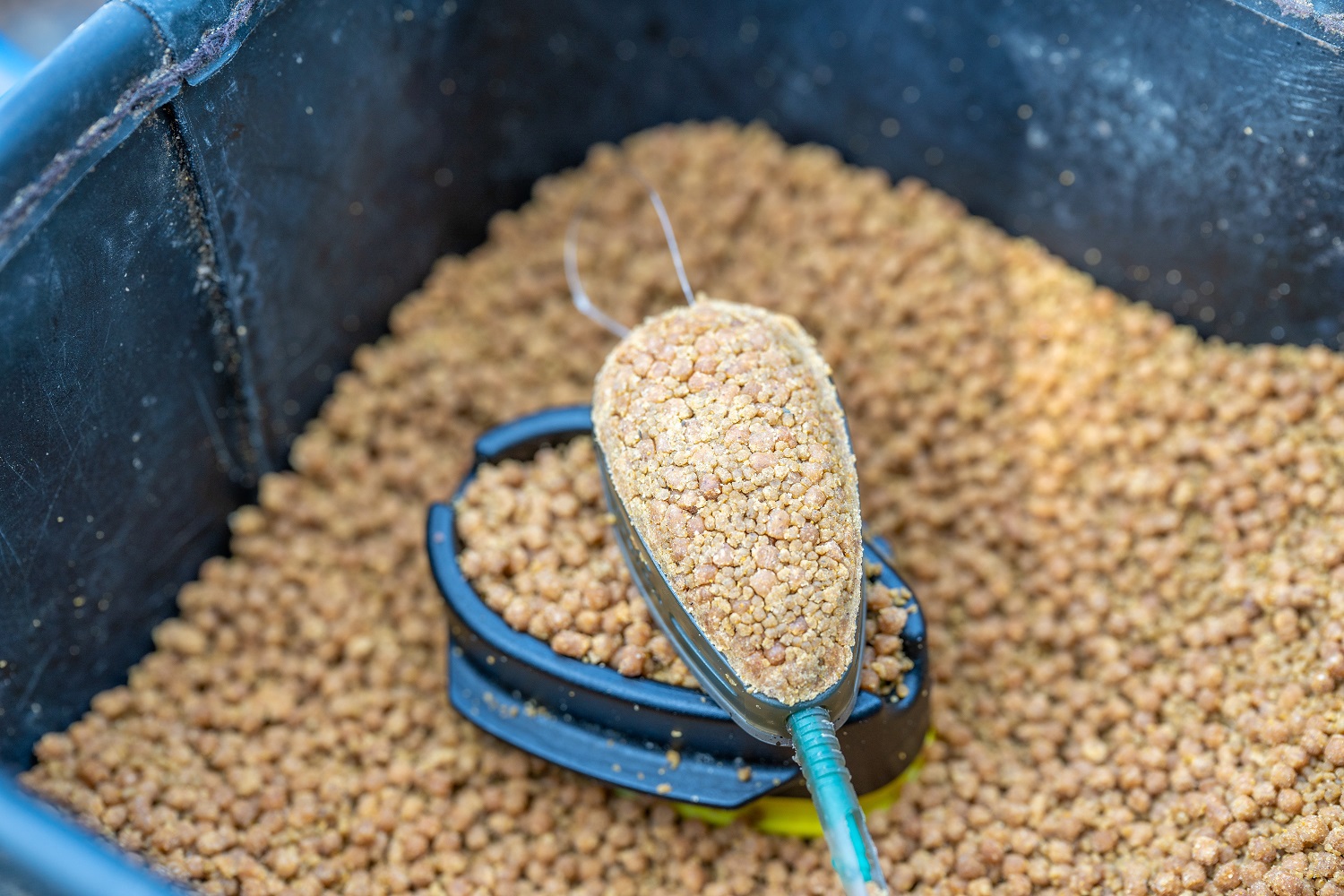
Because I am looking to leave the feeder in the water for up to 45minutes, I stick to the Large ICS Method Feeder. My reasoning is that I still need a decent amount of feed to create the trap and because I am leaving it out in the lake a considerable amount of time, I need to factor in small fish clearing out some of the pellets.
The final thing to discuss are timing your casts. Each venue is different when. It comes to the bite time. At Boddington Reservoir for example you can often get bites 45minutes into the cast so I will always leave the feeder in for that length of time (unless I catch one quicker!). However on other venues, the bite time is usually much less. At Barston Lakes for example, 15-20minutes is usually the longest I will sit on a cast. There are far more nuisance fish in that venue as an example and the last thing I want to happen is me sitting there with an empty feeder and no pellets there to draw a fish in. The timings are venue specific, so make a note of them and use that experience and knowledge in the future.
